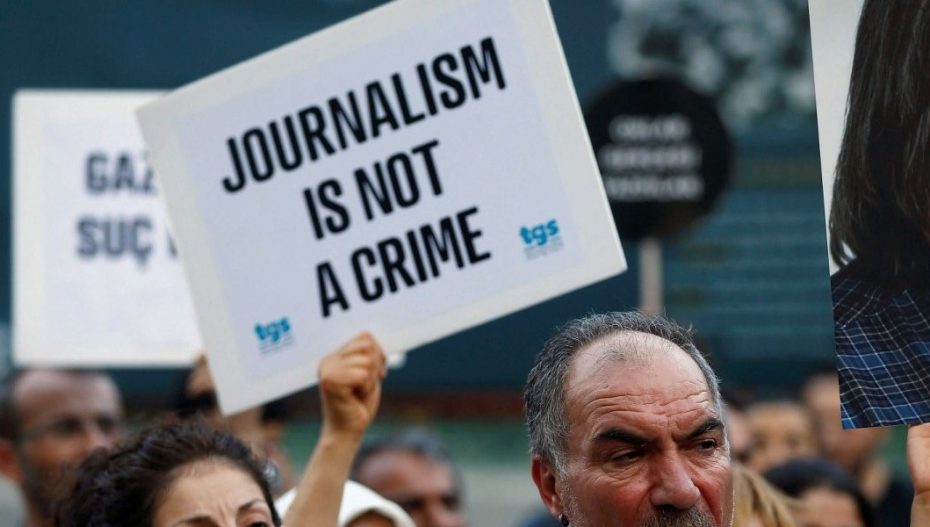The International Press Institute (IPI) on Wednesday, December 29, revealed that 45 journalists have been killed across the world in 2021, according to its annual Death Watch list. Mexico, for the second consecutive year, recorded the highest number of such killings (7) followed by Indian and Afghanistan (6 each) and then the Democratic Republic of Congo (3).
This tally has worrying implications on press freedom and, according to the IPI report, “reaffirms journalists safety as a global challenge”. These reported killings are spread across the globe, even in countries with relatively high levels of press freedom and largely reflect the loss of life of journalists in direct relation to their work, either in retaliation for a particular news report, for their profession in general or as a consequence of the dangerous nature of their coverage.
Of the 45 journalists killed, the IPI has classified 28 of them as being targeted for their work based on the Institute’s own research and investigation. Additionally, three journalists were killed while covering conflict, two while covering civil unrest and one while on duty, reflecting the inherent dangers present in the profession.
What’s more, 11 of these killings are still ‘under investigation’, meaning that while there are suspicions that they were killed for their work, there is not enough evidence as yet to definitively say so. The report here gives the example of former Reuters journalist Jess Malaban who was killed this year in the Philippines. Malaban had worked on a story on President Duterte’s drug war in 2018 and was killed in December this year while watching TV. The IPI continues to investigate cases such as this one, cooperating with local journalist’s organisations for the same.
Region-wise distribution
The Asia-Pacific region proved to be the deadliest in the world for journalists since Indian and Afghanistan together account for 12 of the 45 deaths.
The killings in Afghanistan were precipitated by the violent Taliban takeover in August and the subsequent clampdown on media. While all six of these killings were deemed to be directly in relation to journalistic work, two others who were killed in a bomb blast in Kabul airport while trying to flee the country were not included in the list.
In India, two of the six slain journalists were killed for their work. The IPI report makes specific reference to one Chennakesavulu, a journalist working with Andhra-based news outlet EV5. Chennakesavulu was killed in August after being stabbed by a suspended police officer after he reported on his involvement in a gambling and tobacco smuggling ring.
Additionally, one Arindam Das was killed on duty when he drowned while covering the rescue operation of an elephant from a river. Moreover, one Indian journalist was killed while covering civil unrest and two more cases are under investigation.
The Americas, which led last year’s list, accounted for ten killings this year. All seven of the killings in Mexico were targeted ones, most of which were for coverage of local politics, organised crime and drug trafficking. Coupled with high levels of impunity to those guilty of these murders (suspects have only been arrested in one of these seven killings) and the fact that the government there has decided to stop funds allocated for upholding the Law for the Protection of Human Rights Defenders and Journalists (LPPDHP), Mexico comes through as the most dangerous nation in the world for journalists.
These killings are also not restricted to countries with poor press freedom ranks. Mexico (rank 143), India (142), Afghanistan (122) and the DRC (149) are all ranked poorly by Reporters Without Borders (RSF), however, crime journalist Peter R. De Vries was killed in broad daylight in the Netherlands, which ranks number 6 according to the RSF, indicating that the threat to journalists’ lives are not only restricted to nations where press freedom is seen as poor.
No one held accountable
One factor which serves to keep journalism a dangerous profession is the impunity afforded to the killers of journalists and various governments’ failure to apprehend the guilty. Only six suspects have been arrested for the 28 killings this year. Moreover, the IPI report notes that, even when the state does investigate these killings, these investigations are often flawed, whitewashing the crimes and amounting to gross miscarriages of justice.
The report makes specific reference to the case of Sudarshan TV’s Manish Kumar SIngh who was killed in August. Following the killing, the organisations editor, Suresh Chavhanke tweeted about police inaction and said that he thought the suspect eventually apprehended by the police was not the actual culprit, but someone being used to whitewash the murder.
“Impunity for such killings fuels violence against the media at a time when the free flow of news is more important than ever,” IPI deputy director Scott Griffen said.
While the number of journalists killed has declined steadily over the years (from a high of 133 deaths in 2012 to 45 in 2021), the numbers are still far higher than they ought to be.
Moreover, factors such as certain severe conflicts coming to an end, such as those in Syria or Iraq, which claimed many journalist’s lives in the past, as well as some exemplary deaths (such as that of Jamal Kashoggi in 2018) and a virtual erasure of press in some regions (for example, in Taliban-run Afghanistan) have all contributed to a reduction in journalists deaths without any real positive implications on press freedom and journalists safety, IPI noted.











